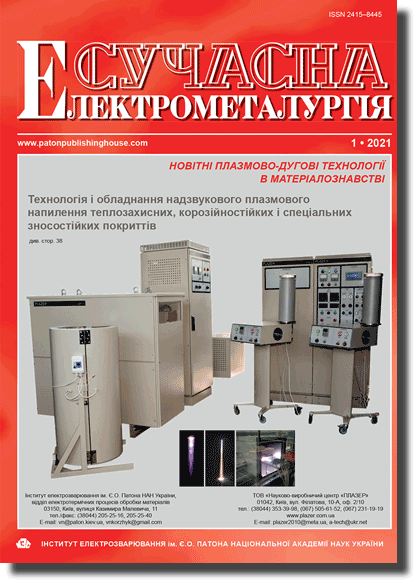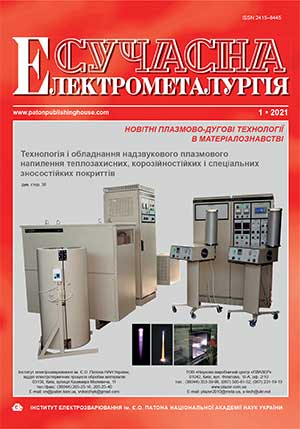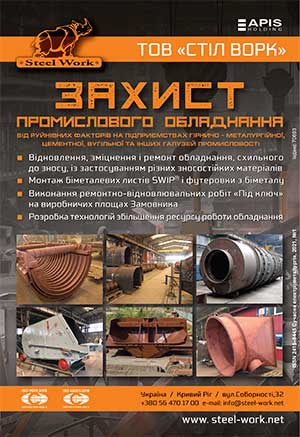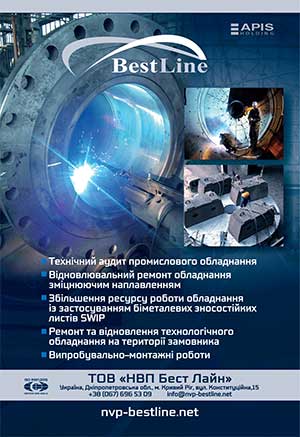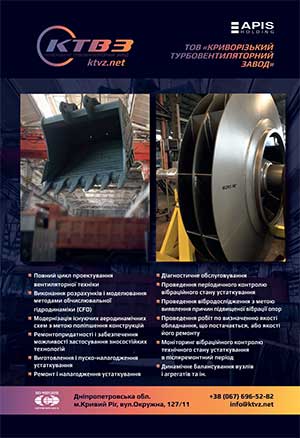| 2021 №01 (04) |
DOI of Article 10.37434/sem2021.01.05 |
2021 №01 (06) |
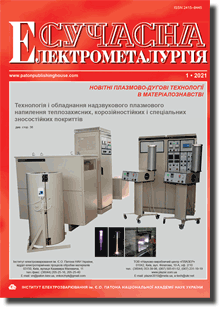
"Suchasna Elektrometallurgiya" (Electrometallurgy Today), 2021, #1, 39-47 pages
Microstructure and mechanical properties of parts from high-strength titanium alloys produced by waam method (Review)
R.V. Selin, S.L. Shvab, M.M. Dyman
E.O. Paton Electric Welding Institute of the NAS of Ukraine. 11 Kazymyr Malevych Str., Kyiv, 03150, Ukraine. E-mail: office@paton.kiev.ua
Abstract
Additive manufacturing is making products based on step-by-step adding of material onto the base in the form of a flat platform or axial billet. Wire Arc Additive Manufacturing is a highly promising technology that allows producing large-sized complex-shaped parts from materials with a high added value. This technology is part of the processes of adaptive manufacturing, which uses metal wires as filler material, and the arc as the power source. In this review article the process of producing parts from titanium alloys by Wire Arc Additive Manufacturing method is considered. This method offers significant advantages over other additive manufacturing processes, namely high effectiveness of using the resources and efficiency, and low cost of equipment. Producing parts from high-strength titanium alloys by Wire Arc Additive Manufacturing method allows controlling the microstructure of the titanium alloys which is necessary, as high-strength titanium alloys are highly sensitive to the thermal cycle. Different methods of controlling the microstructure of parts from titanium alloys, its properties and impact on mechanical characteristics of the part are considered. Ref. 39, Tabl. 3, Fig. 9.
Keywords: additive manufacturing; WAAM; high-strength titanium alloys; microstructure; mechanical properties
Received 22.01.2021
References
1. Martina, F., Colegrove, P.A., Williams, S.W., Meyer, J. (2015) Microstructure of interpass rolled wire+arc additive manufacturing Ti-6Al-4V components. Metallurg. and Mater. Transact. A, 46(12), 6103-6118. https://doi.org/10.1007/s11661-015-3172-12. Bekker, A.C., Verlinden, J.C. (2018) Life cycle assessment of wire+ arc additive manufacturing compared to green sand casting and CNC milling in stainless steel. J. of Cleaner Production, 177, 438-447. https://doi.org/10.1016/j.jclepro.2017.12.148
3. Lütjering, G.,Williams, J.C. (2007) Titanium. Springer Science & Business Media.
4. Wang, Q., Ji, C., Wang, Y. et al. (2013) β-Ti alloys with low young`s moduli interpreted by cluster-plus-glue-atom model. Metallurg. and Mater. Transact. A, 44(4), 1872-1879. https://doi.org/10.1007/s11661-012-1523-8
5. DebRoy, T., Wei, H.L., Zuback, J.S. et al. (2018) Additive manufacturing of metallic components-process, structure and properties. Progress in Materials Sci., 92, 112-224. https://doi.org/10.1016/j.pmatsci.2017.10.001
6. Wang, F., Williams, S., Rush, M. (2011) Morphology investigation on direct current pulsed gas tungsten arc welded additive layer manufactured Ti6Al4V alloy. Inter. J. Adv. Manuf. Technol., 57(5), 597-603. https://doi.org/10.1007/s00170-011-3299-1
7. Ding, D., Pan, Z., Cuiuri, D. et al. (2016) Bead modelling and implementation of adaptive MAT path in wire and arc additive manufacturing. Robotics and Computer-Integrated Manufacturing, 39, 32-42. https://doi.org/10.1016/j.rcim.2015.12.004
8. Wang, F., Williams, S., Colegrove, P., Antonysamy, A.A. (2013) Microstructure and mechanical properties of wire and arc additive manufactured Ti-6Al-4V. Metallurg. and Mater. Transact. A, 44(2), 968-977. https://doi.org/10.1007/s11661-012-1444-6
9. Mereddy, S., Bermingham, M.J., Kent, D. et al. (2018) Trace carbon addition to refine microstructure and enhance properties of additive-manufactured Ti-6Al-4V. JOM, 70(9), 1670-1676. https://doi.org/10.1007/s11837-018-2994-x
10. Mereddy, S., Bermingham, M.J., StJohn, D.H., Dargusch, M.S. (2017). Grain refinement of wire arc additively manufactured titanium by the addition of silicon. J. of Alloys and Compounds, 695, 2097-2103. https://doi.org/10.1016/j.jallcom.2016.11.049
11. Zuback, J.S., Palmer, T.A., DebRoy, T. (2019) Additive manufacturing of functionally graded transition joints between ferritic and austenitic alloys. Ibid., 770, 995-1003. https://doi.org/10.1016/j.jallcom.2018.08.197
12. Onuike, B., Bandyopadhyay, A. (2018) Additive manufacturing of Inconel 718 Ti-6Al-4V bimetallic structures. Additive Manufacturing, 22, 844-851. https://doi.org/10.1016/j.addma.2018.06.025
13. Wang, J., Pan, Z., Ma, Y. et al. (2018) Characterization of wire arc additively manufactured titanium aluminide functionally graded material: microstructure, mechanical properties and oxidation behaviour. Mater. Sci. and Engin. A, 734, 110-119. https://doi.org/10.1016/j.msea.2018.07.097
14. Hernández-Nava, E., Mahoney, P., Smith, C.J. et al. (2019) Additive manufacturing titanium components with isotropic or graded properties by hybrid electron beam melting/hot isostatic pressing powder processing. Sci. Reports, 9(1), 1-11. https://doi.org/10.1038/s41598-019-40722-3
15. Baufeld, B., Brandl, E., Van der Biest, O. (2011) Wire based additive layer manufacturing: Comparison of microstructure and mechanical properties of Ti-6Al-4V components fabricated by laser-beam deposition and shaped metal deposition. J. Materials Proc. Technology, 211(6), 1146-1158.
16. Åkerfeldt, P., Antti, M.L., Pederson, R. (2016) Influence of microstructure on mechanical properties of laser metal wire-deposited Ti-6Al-4V. Mater. Sci. and Engin. A, 674, 428-437. https://doi.org/10.1016/j.msea.2016.07.038
17. Donoghue, J., Antonysamy, A.A., Martina, F. et al. (2016) The effectiveness of combining rolling deformation with Wire- Arc Additive Manufacture on β-grain refinement and texture modification in Ti-6Al-4V. Materials Characterization, 114, 103-114. https://doi.org/10.1016/j.matchar.2016.02.001
18. Antonysamy, A.A., Meyer, J., Prangnell, P.B. (2013) Effect of build geometry on the β-grain structure and texture in additive manufacture of Ti-6Al-4V by selective electron beam melting. Ibid., 84, 53-168. https://doi.org/10.1016/j.matchar.2013.07.012
19. Antonysamy, A.A., Prangnell, P.B., Meyer, J. (2012) Effect of wall thickness transitions on texture and grain structure in additive layer manufacture (ALM) of Ti-6Al-4V. Mat. Sci. Forum, 706, 205-210. Transact. Tech. Publ. Ltd. https://doi.org/10.4028/www.scientific.net/MSF.706-709.205
20. Al-Bermani, S.S., Blackmore, M.L., Zhang, W., Todd, I. (2010) The origin of microstructural diversity, texture, and mechanical properties in electron beam melted Ti-6Al-4V. Metallurg. and Mater. Transact. A, 41(13), 3422-3434. https://doi.org/10.1007/s11661-010-0397-x
21. Vilaro, T., Colin, C., Bartout, J.D. (2011) As-fabricated and heat-treated microstructures of the Ti-6Al-4V alloy processed by selective laser melting. Ibid., 42(10), 3190-3199. https://doi.org/10.1007/s11661-011-0731-y
22. Bantounas, I., Dye, D., Lindley, T.C. (2010) The role of microtexture on the faceted fracture morphology in Ti-6Al-4V subjected to high-cycle fatigue. Acta Materialia, 58(11), 3908-3918. https://doi.org/10.1016/j.actamat.2010.03.036
23. Ho, A., Zhao, H., Fellowes, J.W. et al. (2019) On the origin of microstructural banding in Ti-6Al-4V wire-arc based high deposition rate additive manufacturing. Ibid., 166, 306-323. https://doi.org/10.1016/j.actamat.2018.12.038
24. Alonso, U., Veiga, F., Suárez, A., Artaza, T. (2020) Experimental investigation of the influence of wire arc additive manufacturing on the machinability of titanium parts. Metals, 10(1). https://doi.org/10.3390/met10010024
25. Cong, B., Ding, J., Williams, S. (2015) Effect of arc mode in cold metal transfer process on porosity of additively manufactured Al-6.3 % Cu alloy. The Inter. J. Adv. Manuf. Technol., 76(9-12), 1593-1606. https://doi.org/10.1007/s00170-014-6346-x
26. Ou, W., Mukherjee, T., Knapp, G.L. et al. (2018) Fusion zone geometries, cooling rates and solidification parameters during wire arc additive manufacturing. Inter. J. of Heat and Mass Transfer, 127, 1084-1094. https://doi.org/10.1016/j.ijheatmasstransfer.2018.08.111
27. Ding, D., Wu, B., Pan, Z. et al. (2020) Wire arc additive manufacturing of Ti-6Al-4V using active interpass cooling. Materials and Manufacturing Processes, 35(7), 845-851. https://doi.org/10.1080/10426914.2020.1732414
28. Zhou, Y., Qin, G., Li, L. et al. (2020) Formability, microstructure and mechanical properties of Ti-6Al-4V deposited by wire and arc additive manufacturing with different deposition paths. Mater. Sci. and Engin. A, 772, 138654. https://doi.org/10.1016/j.msea.2019.138654
29. Wu, B., Pan, Z., Ding, D. et al. (2018) The effects of forced interpass cooling on the material properties of wire arc additively manufactured Ti-6Al-4V alloy. J. of Materials Proc. Technology, 258, 97-105. https://doi.org/10.1016/j.jmatprotec.2018.03.024
30. Davis, A.E., Breheny, C.I., Fellowes, J. et al. (2019) Mechanical performance and microstructural characterisation of titanium alloy-alloy composites built by wire-arc additive manufacture. Mater. Sci. and Engin. A, 765, 138289. https://doi.org/10.1016/j.msea.2019.138289
31. (2013) ASTM Standard E399: Standard test method for linear-elastic plane-strain fracture toughness KIС of metallic materials. ASTM Inter., Pennsylvania, US.
32. Attar, H., Ehtemam-Haghighi, S., Kent, D., Dargusch, M.S. (2018) Recent developments and opportunities in additive manufacturing of titanium-based matrix composites: A review. Inter. J. of Machine Tools and Manufacture, 133, 85-102. https://doi.org/10.1016/j.ijmachtools.2018.06.003
33. Martina, F., Williams, S.W., Colegrove, P.A. (2014) Improved microstructure and increased mechanical properties of additive manufacture produced Ti-6Al-4V by interpass cold rolling. In: Proc. of 24th Inter. Solid Freeform Fabrication Symp. (12-14 August, 2014, TX, USA), 490-496.
34. Wang, F., Williams, S., Colegrove, P., Antonysamy, A.A. (2013) Microstructure and mechanical properties of wire and arc additive manufactured Ti-6Al-4V. Metallurg. and Mater. Transact. A, 44(2), 968-977. https://doi.org/10.1007/s11661-012-1444-6
35. Bantounas, I., Dye, D., Lindley, T.C. (2010) The role of microtexture on the faceted fracture morphology in Ti-6Al-4V subjected to high-cycle fatigue. Acta Materialia, 58(11), 3908-3918. https://doi.org/10.1016/j.actamat.2010.03.036
36. Smirnov, I., Polyakov, A., Sudenkov, Y. (2017) Strength and fracture of ultrafine-grained titanium Grade 4. Procedia Structural Integrity, 6, 196-200. https://doi.org/10.1016/j.prostr.2017.11.030
37. Attar, H., Calin, M., Zhang, L.C. et al. (2014) Manufacture by selective laser melting and mechanical behavior of commercially pure titanium. Mater. Sci. and Engin. A, 593, 170-177. https://doi.org/10.1016/j.msea.2013.11.038
38. Yamanaka, K., Saito, W., Mori, M. et al. (2015) Preparation of weak-textured commercially pure titanium by electron beam melting. Additive Manufacturing, 8, 105-109. https://doi.org/10.1016/j.addma.2015.09.007
39. (1994) ASM International, Materials Properties Handbook: Titanium Alloys. Materials Park, OH.
Advertising in this issue:
The cost of subscription/purchase order journals or individual articles
| Journal/Currency | Annual Set | 1 issue printed |
1 issue |
one article |
| TPWJ/USD | 384 $ | 32 $ | 26 $ | 13 $ |
| TPWJ/EUR | 348 € | 29 € | 24 € | 12 € |
| TPWJ/UAH | 7200 UAH | 600 UAH | 600 UAH | 280 UAH |
| AS/UAH | 1800 UAH | 300 UAH | 300 UAH | 150 UAH |
| AS/USD | 192 $ | 32 $ | 26 $ | 13 $ |
| AS/EUR | 180 € | 30 € | 25 € | 12 € |
| SEM/UAH | 1200 UAH | 300 UAH | 300 UAH | 150 UAH |
| SEM/USD | 128 $ | 32 $ | 26 $ | 13 $ |
| SEM/EUR | 120 € | 30 € | 25 € | 12 € |
| TDNK/UAH | 1200 UAH | 300 UAH | 300 UAH | 150 UAH |
| TDNK/USD | 128 $ | 32 $ | 26 $ | 13 $ |
| TDNK/EUR | 120 € | 30 € | 25 € | 15 € |
AS = «Automatic Welding» - 6 issues per year;
TPWJ = «PATON WELDING JOURNAL» - 12 issues per year;
SEM = «Electrometallurgy Today» - 4 issues per year;
TDNK = «Technical Diagnostics and Non-Destructive Testing» - 4 issues per year.





